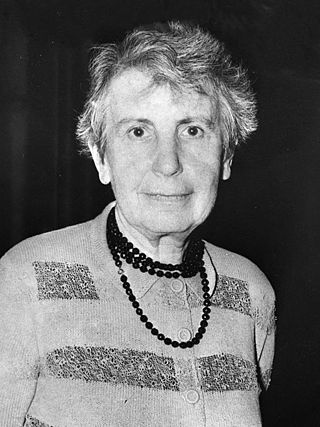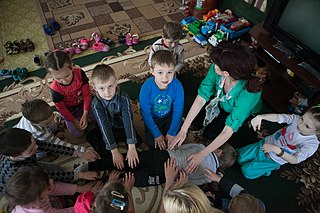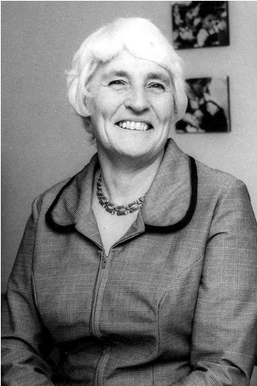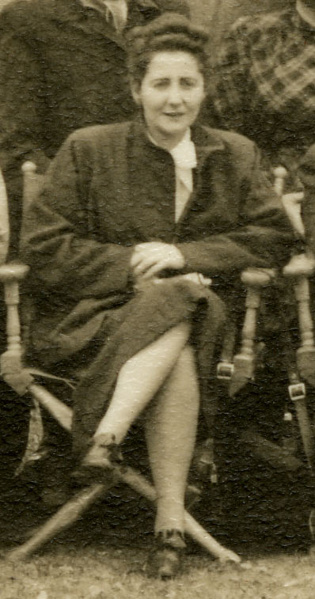Related Research Articles
Psychoanalysis is a set of theories and therapeutic techniques that deal in part with the unconscious mind, and which together form a method of treatment for mental disorders. The discipline was established in the early 1890s by Sigmund Freud, whose work stemmed partly from the clinical work of Josef Breuer and others. Freud developed and refined the theory and practice of psychoanalysis until his death in 1939. In an encyclopedic article, he identified the cornerstones of psychoanalysis as "the assumption that there are unconscious mental processes, the recognition of the theory of repression and resistance, the appreciation of the importance of sexuality and of the Oedipus complex." Freud's colleagues Alfred Adler and Carl Gustav Jung developed offshoots of psychoanalysis which they called individual psychology (Adler) and analytical psychology (Jung), although Freud himself wrote a number of criticisms of them and emphatically denied that they were forms of psychoanalysis. Psychoanalysis was later developed in different directions by neo-Freudian thinkers, such as Erich Fromm, Karen Horney, and Harry Stack Sullivan.

Sándor Ferenczi was a Hungarian psychoanalyst, a key theorist of the psychoanalytic school and a close associate of Sigmund Freud.

Anna Freud CBE was a British psychoanalyst of Austrian–Jewish descent. She was born in Vienna, the sixth and youngest child of Sigmund Freud and Martha Bernays. She followed the path of her father and contributed to the field of psychoanalysis. Alongside Hermine Hug-Hellmuth and Melanie Klein, she may be considered the founder of psychoanalytic child psychology.
Selma Fraiberg (1918–1981) was an American child psychoanalyst, author and social worker.
Transference is a phenomenon within psychotherapy in which repetitions of old feelings, attitudes, desires, or fantasies that someone displaces are subconsciously projected onto a here-and-now person. Traditionally, it had solely concerned feelings from a primary relationship during childhood.
Psychodynamic psychotherapy and psychoanalytic psychotherapy are two categories of psychological therapies. Their main purpose is revealing the unconscious content of a client's psyche in an effort to alleviate psychic tension, which is inner conflict within the mind that was created in a situation of extreme stress or emotional hardship, often in the state of distress. The terms "psychoanalytic psychotherapy" and "psychodynamic psychotherapy" are often used interchangeably, but a distinction can be made in practice: though psychodynamic psychotherapy largely relies on psychoanalytical theory, it employs substantially shorter treatment periods than traditional psychoanalytical therapies. Psychodynamic psychotherapy is evidence-based; the effectiveness of psychoanalysis and its relationship to facts is disputed.

Play therapy refers to a range of methods of capitalising on children's natural urge to explore and harnessing it to meet and respond to the developmental and later also their mental health needs. It is also used for forensic or psychological assessment purposes where the individual is too young or too traumatised to give a verbal account of adverse, abusive or potentially criminal circumstances in their life.
Self psychology, a modern psychoanalytic theory and its clinical applications, was conceived by Heinz Kohut in Chicago in the 1960s, 70s, and 80s, and is still developing as a contemporary form of psychoanalytic treatment. In self psychology, the effort is made to understand individuals from within their subjective experience via vicarious introspection, basing interpretations on the understanding of the self as the central agency of the human psyche. Essential to understanding self psychology are the concepts of empathy, selfobject, mirroring, idealising, alter ego/twinship and the tripolar self. Though self psychology also recognizes certain drives, conflicts, and complexes present in Freudian psychodynamic theory, these are understood within a different framework. Self psychology was seen as a major break from traditional psychoanalysis and is considered the beginnings of the relational approach to psychoanalysis.
Child psychotherapy, or mental health interventions for children refers to the psychological treatment of various mental disorders diagnosed in children and adolescents. The therapeutic techniques developed for younger age ranges specialize in prioritizing the relationship between the child and the therapist. The goal of maintaining positive therapist-client relationships is typically achieved using therapeutic conversations and can take place with the client alone, or through engagement with family members.
Attachment-based psychotherapy is a psychoanalytic psychotherapy that is informed by attachment theory.
Transference neurosis is a term that Sigmund Freud introduced in 1914 to describe a new form of the analysand's infantile neurosis that develops during the psychoanalytic process. Based on Dora's case history, Freud suggested that during therapy the creation of new symptoms stops, but new versions of the patient's fantasies and impulses are generated. He called these newer versions "transferences" and characterized them as the substitution of the analyst for a person from the patient's past. According to Freud's description: "a whole series of psychological experiences are revived not as belonging to the past, but as applying to the person of the analyst at the present moment". When transference neurosis develops, the relationship with the therapist becomes the most important one for the patient, who directs strong infantile feelings and conflicts towards the therapist, e.g. the patient may react as if the analyst is his/her father.
The Chicago Psychoanalytic Institute is a center for psychoanalytic research, training, and education on Michigan Avenue in downtown Chicago. The institute provides professional training in the theory and practice of psychoanalysis and psychotherapy. It was founded in 1932 by Franz Alexander, a pioneer in psychosomatic medicine at the Berlin Psychoanalytic Institute, who moved to Chicago at the invitation of Robert Maynard Hutchins, then president of the University of Chicago. Notable psychoanalysts that have been associated with the institute include Karl Menninger, Karen Horney, Thomas Szasz, Therese Benedek, Hedda Bolgar, Roy Grinker, Maxwell Gitelson, Louis Shapiro, Heinz Kohut, Arnold Goldberg, Jerome Kavka, Frank Summers, Ernest A. Rappaport, and Michael Franz Basch.

Dorothy Trimble Tiffany Burlingham was an American child psychoanalyst and educator. She had a love relationship with Anna Freud and also was a partner of her work and investigation, Burlingham is known for her joint work with Freud on the analysis of children. During the 1960s and 70s, Burlingham directed the Research Group on the Study of Blind Children at the Hampstead Clinic in London. Her 1979 article on blind infants, "To Be Blind in a Sighted World," published in The Psychoanalytic Study of the Child, is considered to be a landmark of empathic scientific observation.
The Anna Freud Centre is a child mental health research, training and treatment centre located in London, United Kingdom. The Centre aims to transform current mental health provision in the UK by improving the quality, accessibility and effectiveness of treatment, bringing together leaders in neuroscience, mental health, social care and education. It is closely associated with University College London (UCL) and Yale University. The Princess of Wales is its royal patron.
Robert Joseph Langs was a psychiatrist, psychotherapist, and psychoanalyst. He was the author, co-author, or editor of more than forty books on psychotherapy and human psychology. Over the course of more than fifty years, Langs developed a revised version of psychoanalytic psychotherapy, currently known as the "adaptive paradigm". This is a distinctive model of the mind, and particularly of the mind's unconscious component, significantly different from other forms of psychoanalytic and psychodynamic psychotherapy.
Psychodynamic Therapy with Infants and Parents aims to relieve emotional disturbances within the parent(s), the baby, and/or their interaction, for example, postnatal depression and anxiety, infant distress with breastfeeding and sleep, and attachment disorders. It rests on attachment theory and psychoanalysis. Sigmund Freud suggested that a modification of his method could be applied to children, and child analysis was introduced in the 1920s by [Anna Freud].., [Melanie Klein], and Hermine Hug von Hellmuth. Klein speculated on infantile experiences to understand her patients' disorders but she did not practice PTIP. Donald Winnicott, a pediatrician and analyst, focused on the mother-baby interplay in his theorizing and his brief parent-child consultations, but he did not work with PTIP.

Rose Edgcumbe, sometimes known as Rose Edgcumbe Theobald, was a British psychoanalyst, psychologist and child development researcher.

Joyce Robertson was a British psychiatric social worker, child behavioural researcher, childcare pioneer and pacifist, who was most notable for changing attitudes to the societally acceptable, institutionalised care and hospitalisation of young children, that was prevalent. In the late 1940s Robertson worked with Anna Freud first at the Well Baby Clinic and later in the Hampstead Child Therapy Clinic. She was later joined by her husband James Robertson. In 1965, both of them moved to the Tavistock Institute of Human Relations to work with John Bowlby on the Young Children in Brief Separation project and the development of attachment theory. This was to research the mental state and psychological development of children who underwent brief separation from their parents. Later in her career, Robertson worked with her husband to produce a series of celebrated documentary films that highlighted the reaction of small children who were separated from their parents. These were shown in hospitals, foster care and state run hospitals. Later she was known for promoting the idea of foster care instead of residential nurseries.
Ilse Hellman Noach was an Austrian-British psychoanalyst and child development expert. She worked with child evacuees from London with psychological issues in the first two years of the Second World War under the employ of the Home Office before working at Anna Freud's Hampstead War Nurseries until the war was over. Hellman trained in psychoanalysis under Dorothy Burlingham and worked at Burlingham's and Freud's Hampsead Child Therapy Course and Clinic from 1945 until her retirement in 1992. She published From War Babies to Grandmothers: Forty-Eight Years in Psychoanalysis in 1990.

Elisabeth Rozetta Geleerd Loewenstein was a Dutch-American psychoanalyst. Born to an upper-middle-class family in Rotterdam, Geleerd studied psychoanalysis in Vienna, then London, under Anna Freud. Building a career in the United States, she became one of the nation's major practitioners in child and adolescent psychoanalysis throughout the mid-20th century. Geleerd specialized in the psychoanalysis of psychosis, including schizophrenia, and was an influential writer on psychoanalysis in childhood schizophrenia. She was one of the first writers to consider the concept of borderline personality disorder in childhood.
References
- 1 2 3 4 5 6 Owen, A. (2001, May). History of Psychology Archives. Retrieved November 2011, from http://www.muskingum.edu/~psych/psycweb/history/afreud.htm Archived 2012-04-07 at the Wayback Machine
- 1 2 3 4 Boeree, C. G. (1998). Retrieved November 2011, from http://webspace.ship.edu/cgboer/annafreud.html
- 1 2 3 4 5 6 Brinich, P. M. (n.d.). Child Psychoanalysis. Retrieved November 2011, from Paul M. Brinich, Ph.D.: http://bellsouthpwp2.net/p/m/pmbrinic/html/child_psychoanalysis.html Archived 2012-04-14 at the Wayback Machine
- ↑ Fonagy P, Target M: Mentalisation and the changing aims of child psychoanalysis. In: Klitzing K von, Tyson P, Bürgin D (eds.): Psychoanalysis in childhood and adolescence. Basel: Karger 2000; p. 129–139.
- ↑ Klitzing K von, Tyson P, Bürgin D (eds.): Psychoanalysis in Childhood and Adolescence. Basel: Karger 2000.
- ↑ Novick KK, Novick J: Working with parents makes therapy work. Lanham: Jason Aronson 2005.
- ↑ Göttken T, Klitzing K von: Manual for short-term psychoanalytic child therapy (PaCT). London: Karnac 2014.
- ↑ Göttken T, White LO, Klein AM, Klitzing K: Short-term psychoanalytic child therapy for anxious children: a pilot study. Psychotherapy (Chic) 2014; 51: 148–58.
- ↑ Klitzing K von, White LO, Otto Y, Fuchs S, Egger HL, Klein AM: Depressive comorbidity in preschool anxiety disorder. J Child Psychol Psychiatr 2014; 55: 1107–16.